American Flag Mythology
Click Here
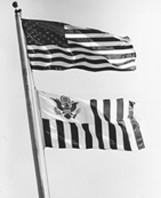 Custom Services Flag flown properly below national flag The flag being flown beneath the United States flag is that of the United States Customs Service. As a civilian branch of the United States government it was responsible to keeping illegal products outside of U.S. borders. It also regulated what could leave the United States and was partially responsible for who could enter the United States. It was dissolved on March 1, 2003 and became an agency of the United States Department of Homeland Security. It is now called the United States Bureau of Customs and Border Protection. The trick of getting an urban legend believed is to make statements that are true, but connect them to unrelated or false facts, thus making the whole thing seem possible. The existence of a separate "civilian" version of our national flag is a perfect example of this strategy. Here's how you do it. 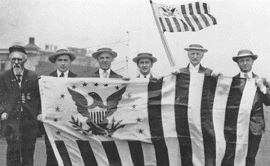 Customs Flag Raising - July 4, 1919 Strategy One: Show a pictures of the flag, and then change the caption. Take a look at this picture. It shows the Customs Ensign being raised over the United States Appraiser's Stores at the Port of Pittsburgh (Penn.) on July 4, 1919. We even know the names of those in the picture. They were from left to right: Eli G. Corbly, Messenger; Harold C. Harbison, Examiner; John B. Thomas, Opener & Packer; Charles A. Davis, Inspector; W.S. Bowler, Examiner; and James Houlahen, Appraiser of Merchandise. However, if we want to create a urban legend, we simply change the caption under the flag to "The Flag of Peace - U.S. Civil Flag in 1919 at the end of World War I." Now the casual reader will assume that the Customs Service flag was a protest flag at a peace rally. The only flags used at the 1919 Peace Rally were standard stars and stripes. Strategy Two: Cite factitious information from unverifiable experts. Read carefully the following information, paying special attention to those statements marked in red. "It is believed by some historians that the Civil Flag was discontinued after the Civil War when the federal government imposed military governments in the States and disbanded civilian government. As a show of it's power over the States, Civil Flags were discontinued and Old Glory became the sole emblem representing the People of the United States of America, united under military (or admiralty) rule." First of all, you should ask yourself "What historians believe this?" Admittedly, right after the Civil War, temporary Union military governments were placed over the former Confederate governments to keep order, but no action was taken to eliminate non-existent "civil" flags. The only flags not allowed were the Confederate flags which were replaced by the Stars and Stripes. If you wonder about the "admiralty rule" comment this refers to an imagined connect between maritime law (A body of civil law which governs maritime questions and offenses) and the imagined military conspiracy. Strategy Three: Distort true facts by mixing in unsupported opinions. Again, read carefully the following information, paying special attention to those statements marked in red. "Through usage and custom, horizontal stripes had become adopted for use over military posts, and vertical stripes adopted for use over civilian establishments. The Civil Flag, intended for peacetime usage in custom house civilian settings, had vertical stripes with blue stars on a white field. By the Law of the Flag, this design denoted civil jurisdiction under the Constitution and common law as opposed to military jurisdiction under admiralty/military law." You take a true fact, like the Congress in 1777 directed that the United States flag should have 13 stripes, alternating red and white, and a union of 13 stars, white in a blue field, but without saying the stripes should be horizontal. Then add some imaginary reference to a flag with "vertical stripes adopted for use over civilian establishments with blue stars on a white field," then throw in unsubstantiated references to the Constitution, common law, and a dark military/admiralty reference and the process of deception really begins. The flag for the original U.S. Custom Cutter Service (eventually becoming the U.S. Coast Guard) was introduced in 1799, 22 years after the original flag resolution, and did, in fact, have vertical stripes. (Sixteen - because there were 16 states then - See images below)
Strategy Four: Add untrue statements that sound reasonable.. Again, read carefully the following information, paying special attention to those statements marked in red. Most flag purchase orders were for the military version by the Federal government. Out paced by military purchases, civil flag orders were almost non-existent as the cost was far more than most Americans could afford. Naturally, the demand for an non-existent flag, or a flag for one branch of the Treasury Department, would be small, and because of this, expensive. How many Custom Service flags have you seen, and unless you own a boat how many Coast Guard ensigns have you seen? Again, using statements that sound reasonable you build a case for the existence of a non-existing flag. It is interesting that the catalyst of this whole myths was in itself a work of fiction. It started in Nathaniel Hawthorne's novel "The Scarlet Letter" which contains a description of an American Customs flag erroneously described as having 13 stripes and calling it a "civil" flag. (Actually, since the Customs Service was not a military branch then, technically it was a "Civil" flag.) "...here, with a view from its front windows adown this not very enlivening prospect, and thence across the harbour, stands a spacious edifice of brick. From the loftiest point of its roof, during precisely three and a half hours of each forenoon, floats or droops, in breeze or calm, the banner of the republic; but with the thirteen stripes turned vertically, instead of horizontally, and thus indicating that a civil, and not a military, post of Uncle Sam's government is here established.
It provided the perfect opening to start a new urban legend. When the newest movie based on Hawthorne's novel showed the "civil" flag it added fire to the cause. It has also been helped by the fact that the US Treasury Department flags and ensigns were not standardized until the American Civil War, and each Collector of Customs was responsible for acquiring flags and ensigns on their own, leading to many variants in both construction and details of insignia. Add into this mix a variety of similar looking 18th and 19th century flags of the US Revenue Service and US Coast Guard, and the urban legend supporters and conspiracy theory enthusiasts have a rich field to choose from.
Take a look at this illustration of an early 18th Century US Custom Service flag recently sold at Sotheby's Auction (notice it has 13 stripes instead of 16 stripes, either a variant or the result of a repair) and you can see the confusion that can be generated. 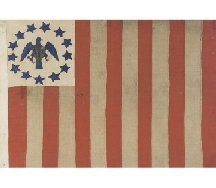 Custom Services Flag sold at Sotheby's Auction Lot #467 In conclusion, the urban legend of a civil flag continues to allow conspiracy theory enthusiasts fertile land to plow, and a chance to make a little money on the side by selling civil flags and buttons. Supporters of Ron Paul have flown a modern version of the civil flag at Ron Paul presidential rallies. It is also interesting that the same conspiracy theory enthusiasts who make claims for a separate civilian version of the flag also claim that any gold fringe on a flag signify some sort of Admiralty/Military/Law Merchant plot... but that's another story, or rather myth.
Interestingly enough, although historically the civil flag flies only as an interesting flight of fancy, today it has also become a "suppositious" flag and is now being manufactured and sold as a protest/message flag, but this is another topic. |

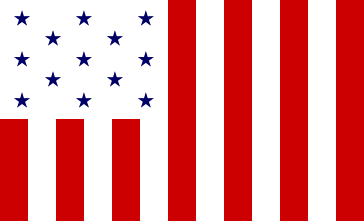
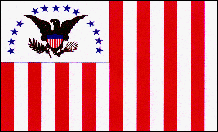
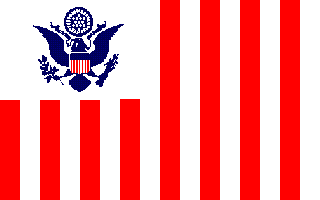
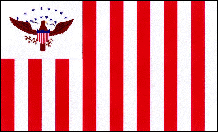
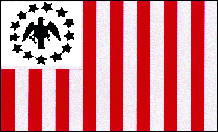

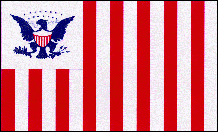
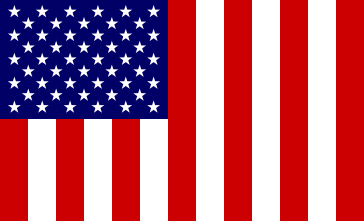
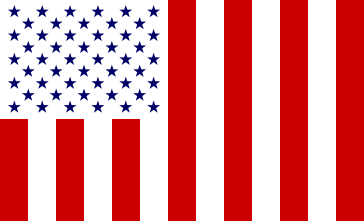
Replies